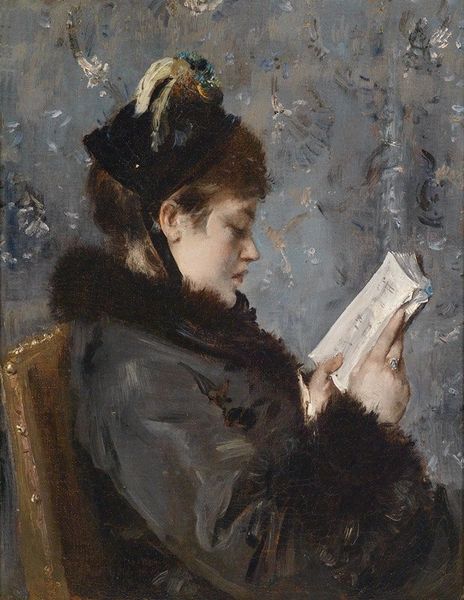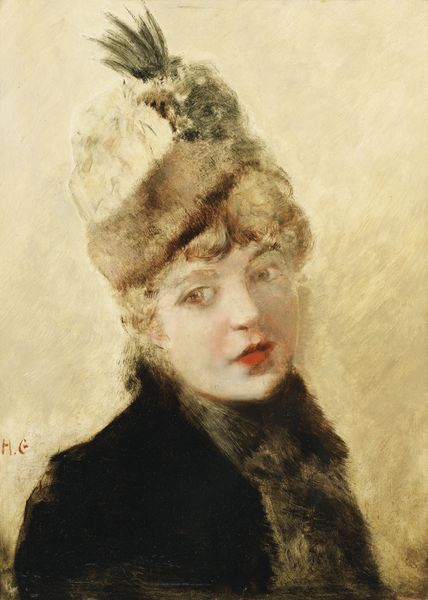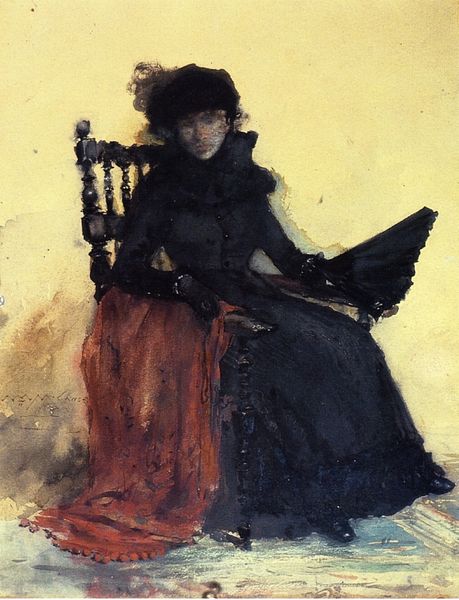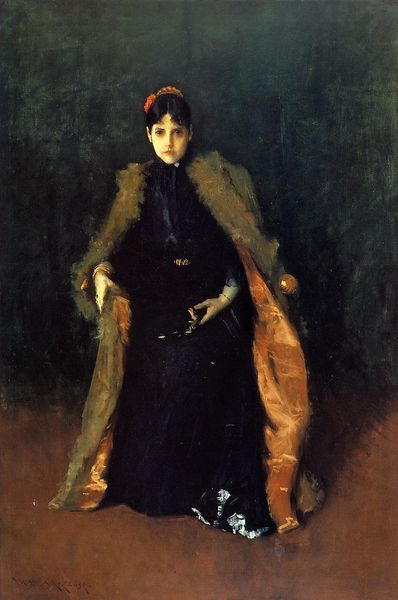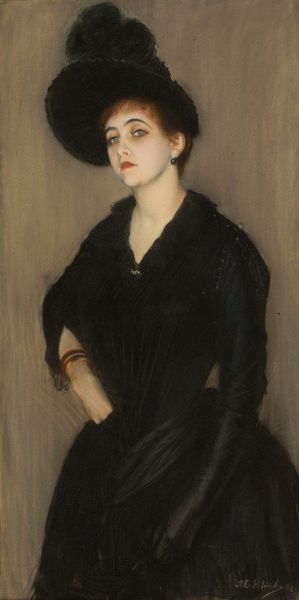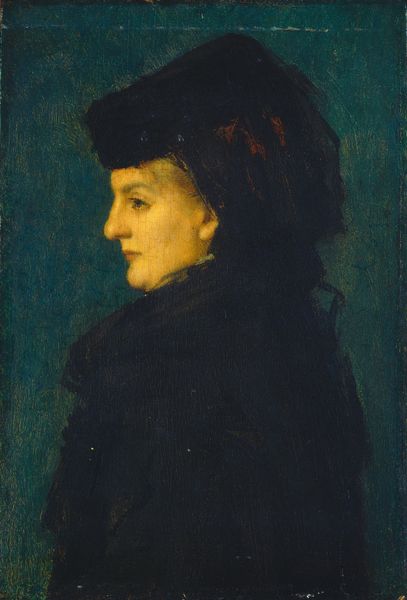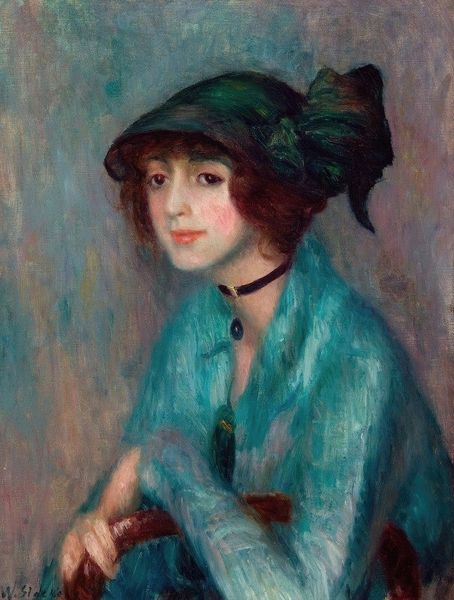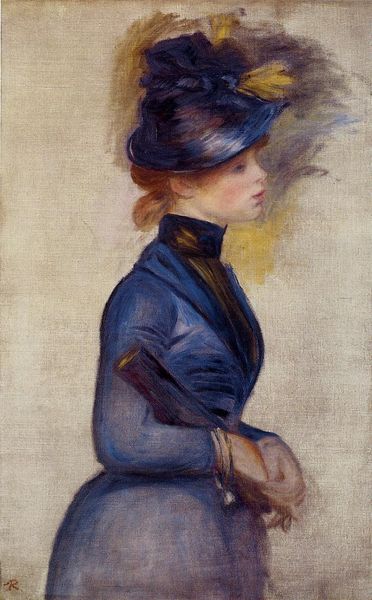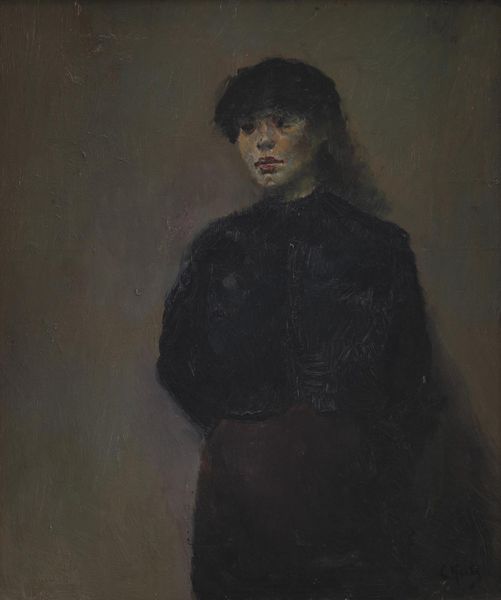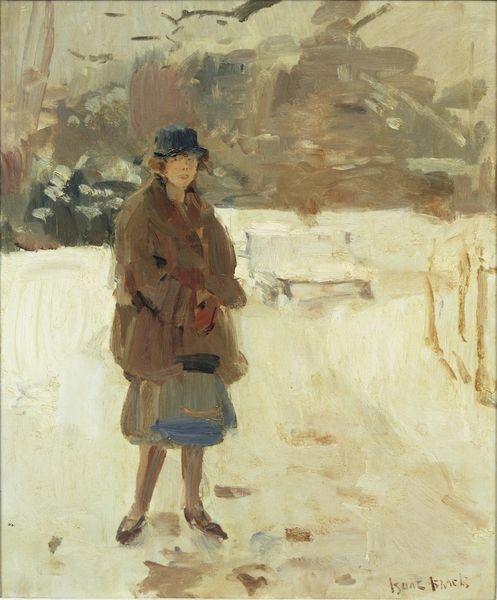
Copyright: Public Domain: Artvee
Editor: This is John Singer Sargent’s "Woman with Furs," made around 1880 to 1885 using oil paint. I’m really drawn to how the fur texture almost contrasts with the flatter strokes used for her coat and the background. What stands out to you? Curator: What interests me is not only the visual representation of furs, but also their very materiality and the social context around them. Furs were a luxury item, signifiers of wealth and status. The act of painting them, of simulating their texture and warmth with oil paint, raises interesting questions about the labor involved in both their production and representation. Editor: So, you're thinking about the actual making of both the fur garment and the painting? Curator: Precisely! Who made the fur? Under what conditions? And then, consider the labor of the artist, transforming raw materials like pigment and canvas into a desirable commodity. The 'painterly' style, as it's been called, isn't just about aesthetics. It calls attention to its own constructed nature. Editor: It's interesting to think about the painting itself as a product alongside the fur coat. Do you think Sargent was making a commentary on wealth or consumerism here? Curator: Perhaps subtly. Artists, like other skilled laborers, participate in systems of value and exchange. This piece makes me think of questions around artistic skill, labor practices, and material culture intertwined. Editor: I hadn't considered the act of painting the fur in that light before. I was focusing too much on just the image and symbolism and not enough on its physical construction and societal implications. Curator: That's often the case. Analyzing the materials and how they reflect the socio-economic contexts helps unpack deeper meaning in the work.
Comments
No comments
Be the first to comment and join the conversation on the ultimate creative platform.
